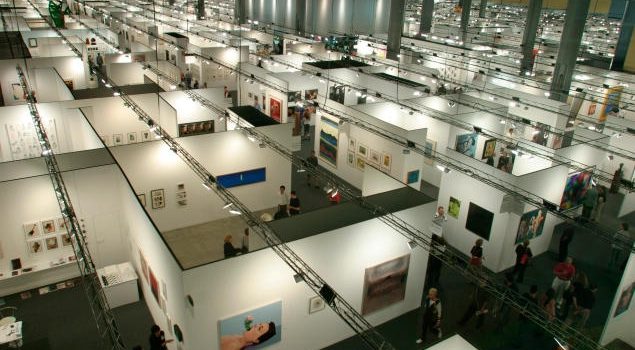Source: Observer.
The art market rebounded in 2022, breaking numerous auction records. Here’s what to expect in 2023.
The art market had a record breaking year in 2022, with the biggest auction sale in history and the highest-ever annual total for an auction house, despite financial troubles stemming from inflation, global conflict and the lingering effects of the pandemic.
Christie’s, Sotheby’s and Phillips all announced company-high sale totals for the year. Phillips, the smallest of the three auction houses, recorded $1.3 billion in sales, with a 20 percent increase in private sales. While Sotheby’s projected $8 billion by the end of 2022, more than $1 billion of these sales actually came from Sotheby’s car and real estate auctioneers, which the auction house doesn’t own outright.
Meanwhile, Christie’s reached $8.4 billion worth of annual sales, the highest in art market history. The record-breaking figure from Christie’s was largely due to successful single-owner sales, like the $1.62 billion auction of the collection of Paul Allen, co-founder of Microsoft.
The market is expected to stay strong as it continues into the new year. The industry’s embrace of online sales will continue, as institutions turn to digital methods of purchasing artwork instead of returning to in-person events. Meanwhile, the demographics of the industry’s collecting base are predicted to shift considerably, as young collectors become more active, while Asian buyers continue to have a growing impact on the market.
Expect more lucrative art sales
More high-profile auctions are to be expected in the near future as prominent collectors age, said Giovanna Bertazzoni, vice chair of Christie’s 20th and 21st century department, at a Christie’s press conference on Dec. 19. “The collectors who gathered these works are reaching the end of their ‘collecting cycle,’ as we say,” said Bertazzoni.
And while the economy is uncertain, spending has actually increased among collectors who have disposable income, according to a 2022 art collector survey from Artsy. “When the economy tightens, the art market becomes more concentrated at the top,” reads the report. “Those with more money feel comfortable to carry on their buying habits as usual, or even increase their expenditures.” For collectors with an income above $500,000, 74 percent said inflation hasn’t affected their art purchases.
The median expenditure of art collectors during the first half of 2022 was $180,000, an increase from the $164,000 that collectors spent in all of 2021, while the share of collectors purchasing works nearly doubled to 23 percent, according to Art Basel and UBS’s annual art market report. Meanwhile, nearly three quarters of surveyed collectors said they were optimistic about the future of the art market in the next few months, with more than half planning to buy pieces.
An online shift as young people enter the industry
Sotheby’s reported a record number of bidders under the age of 40, while collectors under 20 tripled in its luxury categories. And Philips said nearly a third of buyers at the auction house in 2022 were millennials.
Much of their purchasing will be occuring online, as art collectors plan to focus on buying artwork through digital channels instead of attending galleries, auctions and fairs in-person. In its annual wrap-up, Christie’s said nearly half of its sales are now held online, while 75 percent of auction bids were placed digitally. This number rose to 91 percent at Sotheby’s.
A preference for online purchases among collectors surveyed by Art Basel and USB increased to 37 percent, up from 29 percent in 2020. This is especially true for younger collectors entering the industry. Of those who began collecting in the past four years, 90 percent bought art online in the past year, according to Artsy.
The embrace of digital paths to art collecting is only expected to grow as younger collectors become active in art purchasing. Around 86 percent of next-generation collectors bought the same amount of works or more than last year, compared to 68 percent in 2021.
The growing importance of Asian collectors
In their yearly roundups, both Sotheby’s and Phillips also emphasized plans to open new locations in Hong Kong. Sotheby’s, which will celebrate its 50th anniversary in Asia next year with a series of events and auctions, said Asian collectors are bidding 40 percent more per person on average, while more than one third of Phillips sales were to Asian clients, 40 percent of whom were millennials.
Christie’s, meanwhile, noted that the Asia-Pacific region currently constitutes the fastest growing base of art collectors.
Figuration and identity politics
Art collectors are will be eyeing surrealism and abstraction in 2023. Work from young female abstract artists, such as Jade Fadojutimi and Lucy Bull, are in high demand, as are pieces from the late surrealists Dorothea Tanning and Leonora Carrington.
And figurative art, which was popular throughout 2021 and 2022, is likely to remain an important trend in the art market, especially when combined with identity politics, according to an art market report from Bank of America. Notable figurative artists to watch include Titus Kaphar, Salman Toor and Toyin Ojih Odutola. When it comes to artwork consisting of social or political criticism, text-based artwork is beginning to attract more attention, in particular collages from conceptual artists Barbara Kruger, Adam Pendleton and Tracey Emin.
New popularity for previously-overlooked artists
The works of older or more recently deceased artists, such as the late Jacob Lawrence and Romare Bearden, are becoming more desirable, according to the Bank of America, as collectors are interested in discovering artists underappreciated by the industry during their career. Meanwhile, works from female artists like Anna Weyant, Emily Mae Smith and Flora Yukhnovich are also predicted to trend upwards.
2023 will additionally see an increase in demand for young and emerging artists of color. Of Artsy’s top 20 most followed artists this year, more than half were artists of color, including seven of the top ten. The company’s top followed artists, Alfie Caine, Nedia Were and Danielle Mckinney, are all young figuratists and respectively hail from the U.K., Kenya and the U.S.








